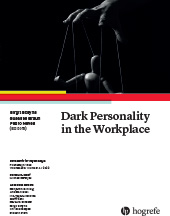Abstract
Abstract. Leaders with dark personalities are notorious for their destructive influences at work. Yet, it may not be enough for organizations to solely focus their interventions on leaders exhibiting dark personalities. Instead, we argue that systemic interventions that rely on levers at multiple organizational levels may be more fruitful in tackling destructive leadership. Specifically, we propose that interventions accounting for the individual characteristics of leaders and followers, as well as the organizational contexts in which destructive leadership is allowed to occur, are more likely to be effective and sustainable. By integrating literature from management, psychology, and educational sciences, we propose a framework that could serve as a guideline for organizational interventions and spur future research on how to mitigate destructive leadership processes.
References
(2006). Ties, leaders, and time in teams: Strong inference about network structure’s effects on team viability and performance. Academy of Management Journal, 49(1), 49–68. https://doi.org/10.5465/amj.2006.20785500
(2018). No regard for those who need it: The moderating role of follower self-esteem in the relationship between leader psychopathy and leader self-serving behavior. Frontiers in Psychology, 9, Article 1281. https://doi.org/10.3389/fpsyg.2018.01281
(2021). When employees retaliate against self-serving leaders: The influence of the ethical climate. Journal of Business Ethics, 168(1), 195–213. https://doi.org/10.1007/s10551-019-04218-4
(2015). Destructive leadership: Causes, consequences and countermeasures. Organizational Dynamics, 44(4), 266–272. https://doi.org/10.1016/j.orgdyn.2015.09.003
(2006). How, when, and why bad apples spoil the barrel: Negative group members and dysfunctional groups. Research in Organizational Behavior, 27, 175–222. https://doi.org/10.1016/S0191-3085(06)27005-9
(2021). What works in anti-bullying programs? Analysis of effective intervention components. Journal of School Psychology, 85, 37–56. https://doi.org/10.1016/j.jsp.2020.12.002
(2013). Destructive leadership: A theoretical review, integration, and future research agenda. Journal of Management, 39(5), 1308–1338. https://doi.org/10.1177/0149206312471388
(2018). The Dark Triad and workplace behavior. Annual Review of Organizational Psychology and Organizational Behavior, 5, 387–414. https://doi.org/10.1146/annurev-orgpsych-032117-104451
(2018). The dark core of personality. Psychological Review, 125(5), 656–688. https://doi.org/10.1037/rev0000111
(2009). Coaching on the dark side. International Coaching Psychology Review, 4(1), 9–21.
(2012). Leader power and self-serving behavior: The moderating role of accountability. The Leadership Quarterly, 23(1), 13–26. https://doi.org/10.1016/j.leaqua.2011.11.002
(2021). Distinguishing the explicit power motives: Relations with dark personality traits, work behavior, and leadership styles. Zeitschrift für Psychologie. Advance online publication. https://doi.org/10.1027/2151-2604/a000481
(2017). Organizational culture and leadership (5th ed.). Wiley.
(2019). Shady strategic behavior: Recognizing strategic followership of dark triad followers. Academy of Management Perspectives, 33(2), 234–249. https://doi.org/10.5465/amp.2017.0005
(2018). Destructive leadership: A critique of leader-centric perspectives and toward a more holistic definition. Journal of Business Ethics, 151(3), 627–649. https://doi.org/10.1007/s10551-016-3257-9
(2011). Understanding and dealing with bullying in schools. The Educational Forum, 75(4), 315–326. https://doi.org/10.1080/00131725.2011.602468
(2019). “Fear of losing power corrupts those who wield it”: The combined effects of leader fear of losing power and competitive climate on leader self-serving behavior. European Journal of Work and Organizational Psychology, 28, 742–755. https://doi.org/10.1080/1359432X.2019.1635584



